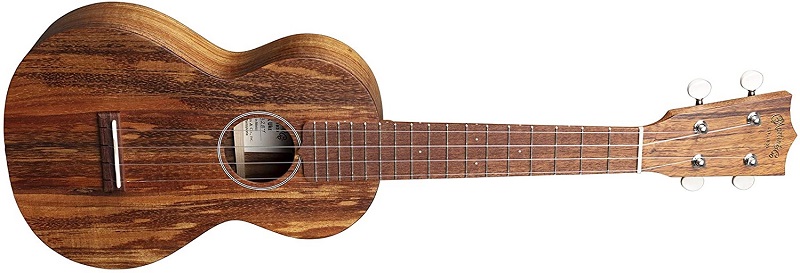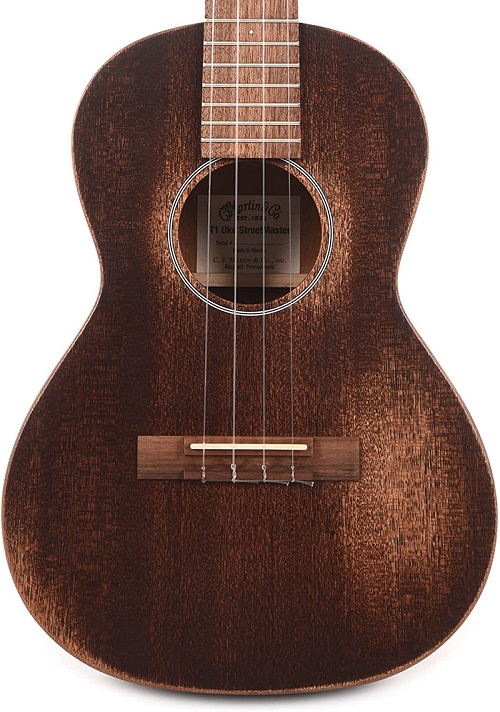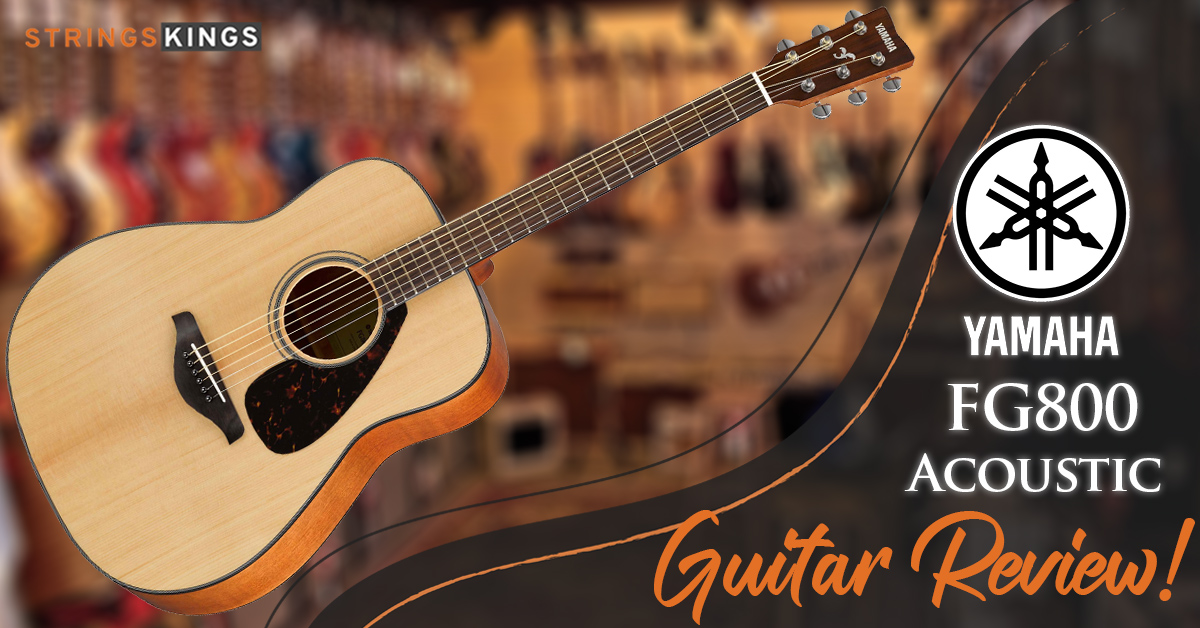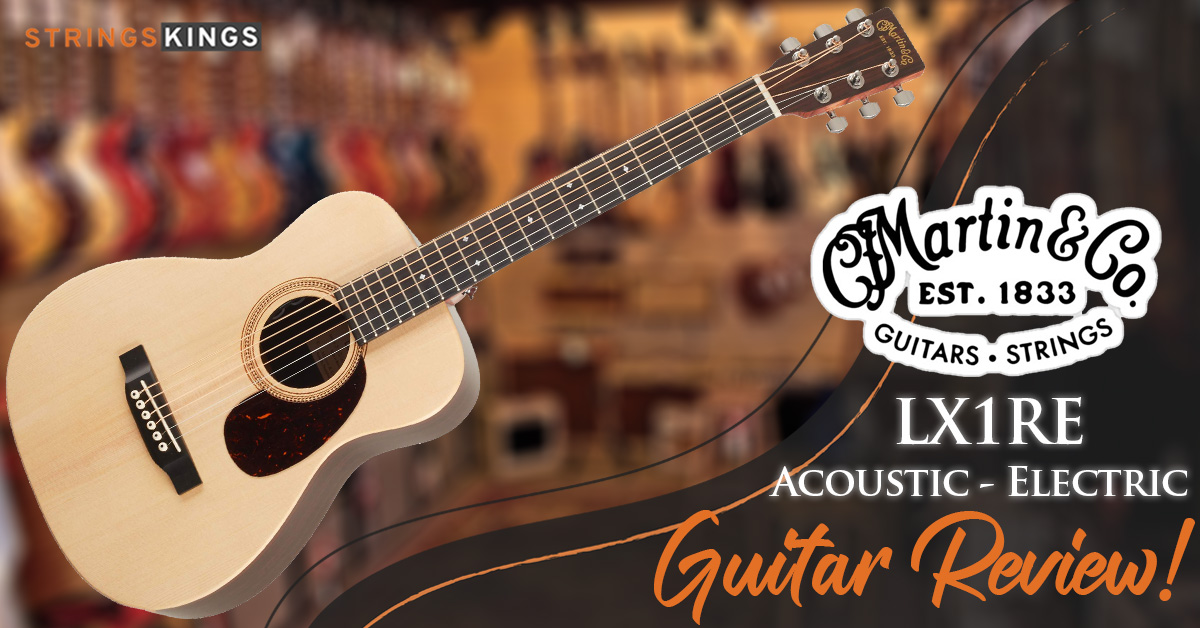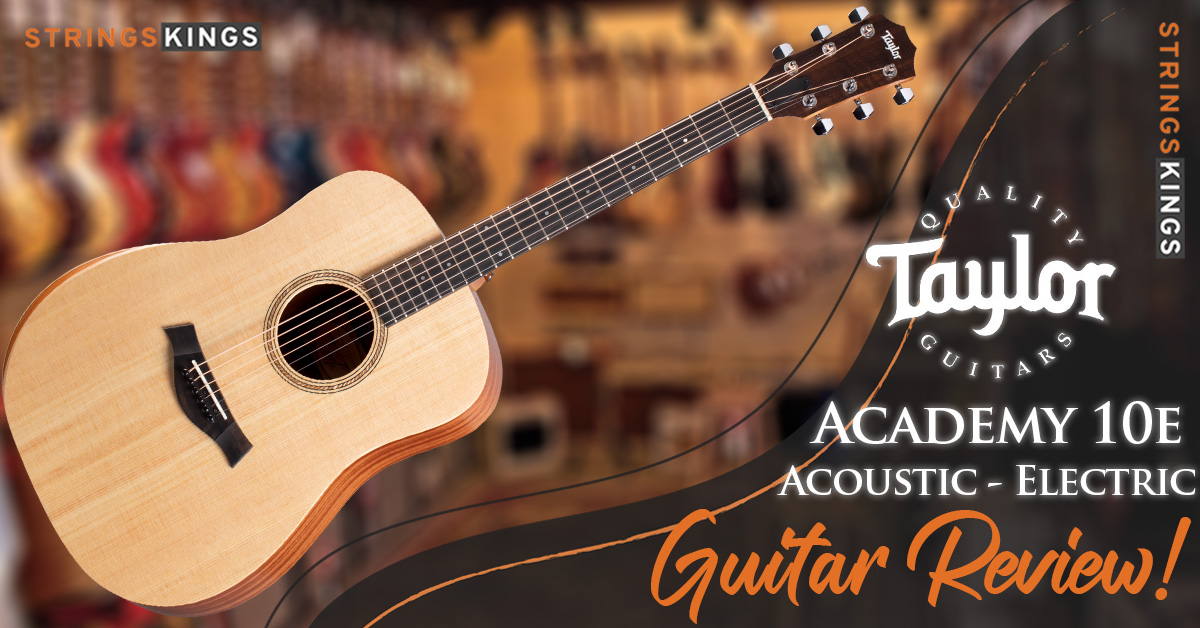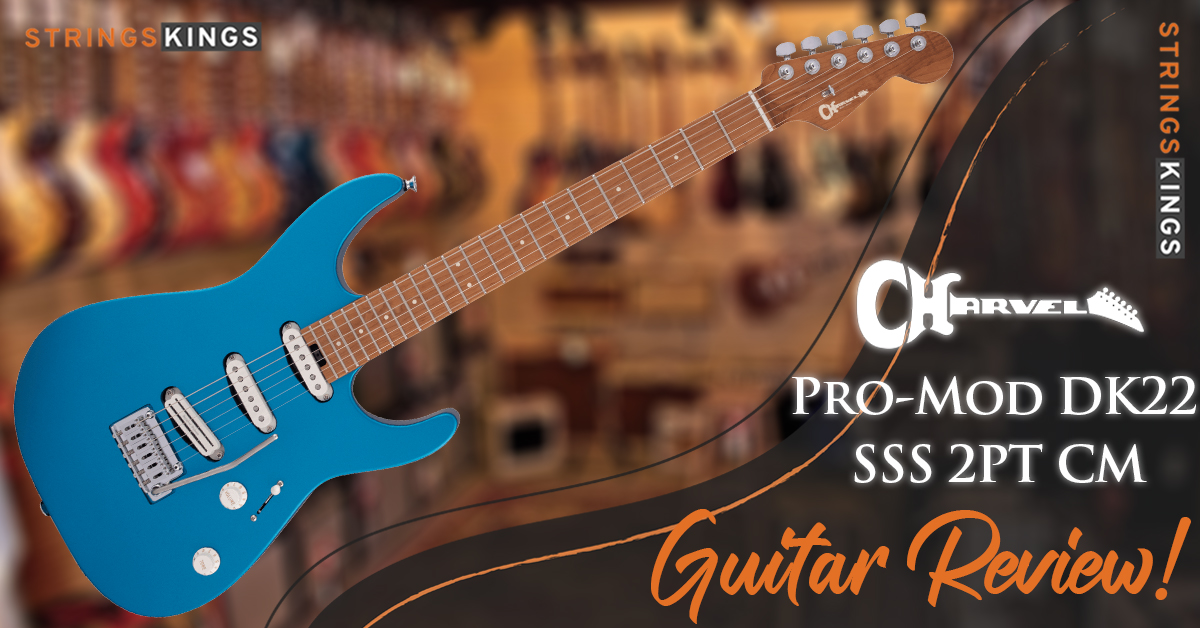Table of Contents
Everything About this Brand in This Martin Ukulele Review
Beginning production in 1919, Martin puts 175 years of guitar manufacturing and nearly 100 years of Ukulele-making expertise into all of their instruments, and it shows. Recommending a Martins Ukulele is definitely kinda tough. They do not make bad instruments, therefore it is nearly an embarrassment of riches as we speak about them.
To decide which Martins we would suggest we had to take a look at plenty of factors. Not only did we take a look at all the items we usually consider, things like volume, tone, sound, materials, construction, and look, but with Martin, we decided to think about the price too.
It will be easy to suggest a bunch of $1000-$2000 Ukes that many of our viewers could not afford. However, we wanted to pick some that almost all of our viewers would actually enjoy and still be able to afford. Earlier than we get into our recommendations, we need to cover the sizes available to you when buying Martins Ukuleles.
Martin’s Ukulele Sizes
The only major size class that Martin company doesn’t currently provide is the Baritone, they’ve very strong offerings within the Soprano, Concert, and Tenor sizes, though.
Martin Soprano Ukes
Martin’s Soprano Ukes carry a standard dimension and form. Most are 20” long and have 17 frets. Despite their small size, Martin manages to get nice, enjoyable, nice light sound out of these instruments that make it easy to think about you enjoying the beaches of Hawaii.
Martin Concert Ukulele
Possibly the proper starter Ukulele, this size is simpler for many to play than the Soprano however carries more of a standard sound than some Tenor or Baritone models. Weighing in at 23” long and geared up with 17 frets, these are some of our favorite Martins.
Martin Tenor Ukulele
For those who’re transitioning from a Martins Guitar to the Ukulele, this can be the right size you can begin with. The Tenor Ukulele is the biggest size that Martin makes and is just a bit smaller than a travel guitar. Measuring 26” long and geared up with a regular 20 frets, this instrument might be comfy for most former guitar players.
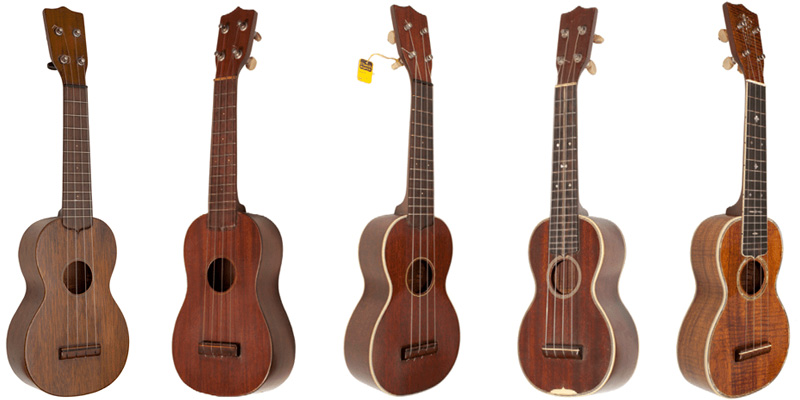
Martin’s Ukulele Models
Ukuleles have been in the highest production from 1916 to the 1930s, though still manufactured in quantity till 1965. Manufacturing quantities during some intervals have been as great as Martin’s guitars. Martin ukes are thought of to be one of the best for craftsmanship and sound. The Koa wooden models are more collectible than the mahogany models. The fancier style 5 models are worth greater than plainer types 0 to 3. All sizes are collectible.
The primary ukuleles, built in 1916, have serial numbers starting from one to lower than 200. Ukes made after 1916 don’t have serial numbers and have to be dated by specification changes. For instance, in 1962 Martin added: “made in the USA” to the inside stamp.
Ukes have the stamp on the back of the peghead till 1935. Peghead decals don’t seem in catalog pictures until after WWII.
Martin ukuleles were produced in the biggest numbers in the smallest soprano size, however, concert and tenor sizes have been out there circa 1922. These models have been accessible in all the following types, excluding Style 0, which was produced only as a soprano. Custom order ukuleles, while rare, have been obtainable upon request, and should have mixed features from various types.
Martin Style 0 Uke specs:
Probably the most basic of Martin’s ukes. Mahogany with no body binding and nothing fancy. Discontinued within the 1970s.
- Introduced in 1922
- Mahogany vintage construction
- No bindings on the body
- 12 fret rosewood fingerboard with bar frets
- C.F.Martin & Co. on the back of the headstock
- Small dot inlays
- Rosewood friction pegs
- 1927: Ebony nut and nickel-plated pegs
- 1932: Decal logo on the front of the headstock
- 1934: T frets
- The 1970s: discontinued. Recently the S-O (made in Mexico) has been introduced
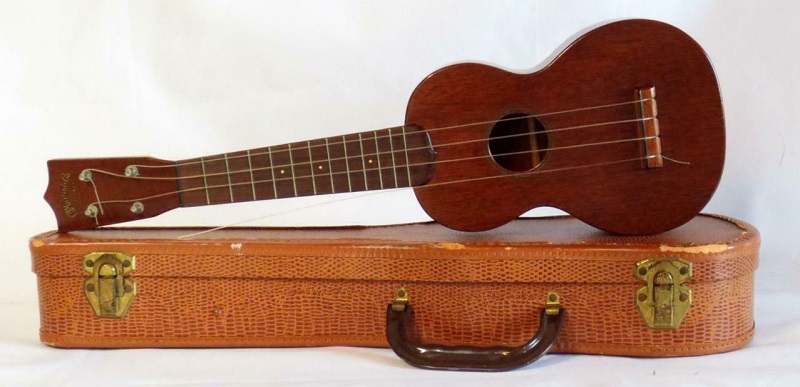
Martin Style 1 Uke specs:
Introduced in 1918, the first Martin uke model was made. Discontinued in 1965.
- Introduced in 1918
- The first 200 or so ukes serial numbered, thereafter without
- Mahogany vintage construction
- Rosewood outer binding with inner black/white
- 12 fret rosewood neck with bar frets
- Earliest examples with boxwood bridge saddle and nut
- C.F.Martin & Co. on the back of the headstock
- Small dot inlays
- Rosewood friction pegs
- 1920: Koa wood 1K available
- 1927: Patent pegs
- 1932: Decal logo on the front of the headstock
- 1934: T frets, dark plastic binding
- 1942: Style 1K last listed
- 1965: Style 1 was last listed and discontinued
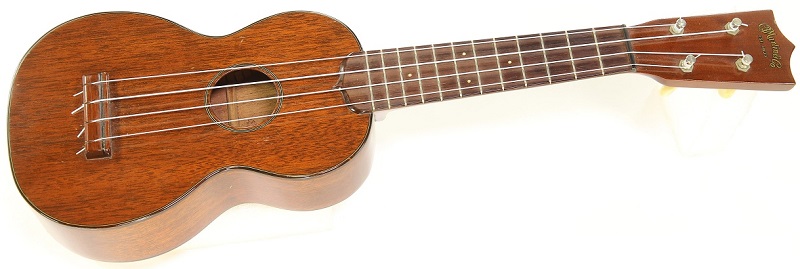
Martin Style 2 Uke specs:
Martin Style 2 uke model was made first in 1918, discontinued in 1965.
- Introduced in 1918
- Mahogany vintage construction
- Triple bound top binding with outer binding
- Single bound back
- 12 fret rosewood neck with bar frets
- C.F.Martin & Co. on the back of the headstock
- Small dot inlays
- 1920: Koa wood 2K available
- 1923: Nickel patent pegs
- 1932: Decal logo on the front of the headstock
- 1933: Style 2K last listed
- 1934: T frets
- 1965: Style 2 last listed

Martin Style 3 and Style 3k Uke specs:
Style 3 uke model made first in 1918, discontinued in the 1970s.
- Introduced in 1918
- Mahogany vintage construction
- 7-layer top binding
- 3 layer back binding
- 5-layer soundhole ring
- Celluloid ornament on top, behind the bridge
- 17 fret ebony neck extents to the soundhole
- Bar frets
- Small pearl paired-diamond inlays at frets 5, 7, 9
- 3 lines inlaid down the center of the fretboard
- The nut of 3-ply plastic
- C.F.Martin & Co. on the back of the headstock
- Kite-shaped celluloid peghead ornament
- Friction pegs
- 1920: Koa wooden 3K available
- 1923: No peghead ornament, nickel-plated pegs
- 1930: One-piece ivory nut
- 1932: Decal logo on the front of the headstock
- 1934: T frets
- 1940: No celluloid top ornament
- 1940: Dot inlays replace pearl diamond inlays and inlaid lines
- 1941: Last Style 3K
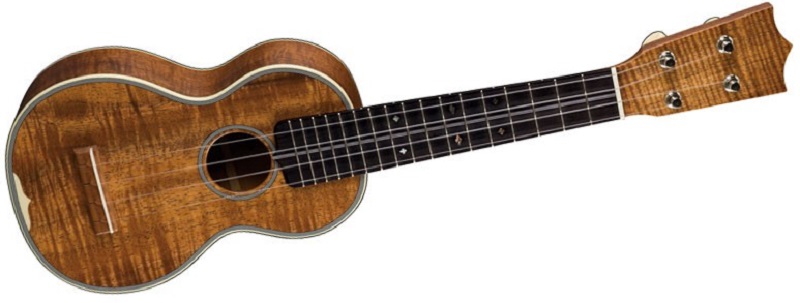
Martin Style 5 and Style 5k Uke specs:
Though discontinued in 1942, the Style 5 has been reintroduced recently.
- Introduced in 1922
- Koa vintage body
- Ivoroid bound top and back with abalone trim
- Abalone pearl and black/white wood around the soundhole
- Ivoroid-bound ebony fretboard
- 17 fret ebony neck extents to the soundhole
- Bar frets
- Varied snowflake pearl inlays
- Koa peghead veneer with a pearl-inlaid flowerpot
- Patent pegs
- 1934: T frets
- 1940: Style 5 mahogany (same trim as 5K) introduced
- 1940: Style 5K discontinued
- 1942: Style 5 mahogany body discontinued
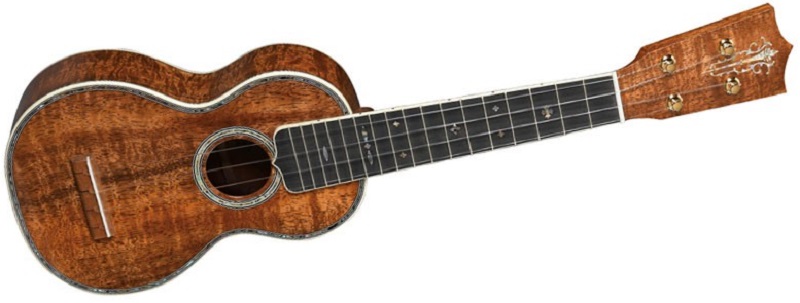
Collecting Vintage Martin Ukuleles
This Brand has a handful of different models which are worth a look.
Take a look at Martin’s C1K and T1K ukuleles.
C1K and T1K ukuleles are Martin’s most affordable all-solid koa models, however, they’re still comparatively expensive in comparison with the big assortment of beginner ukuleles available on the market lately. Are they worth the extra cash? Keep reading my Martin C1K and Martin T1K review to find out.
Martin C1K and Martin T1K Review Summary
While Martin is generally recognized for its acoustic guitars, the company has a rich historical past of constructing high-quality guitars but also and ukuleles. Actually, ukes have been responsible for holding the Martin company afloat throughout a few of their more trying financial times.
The C1K and T1K symbolize two of probably the most affordable ukes within the Martins lineup. Their simple, understated design helps preserve the price down, however top-notch craftsmanship offers a playing experience on par with ukes that cost 2 or 3 times as much.
Martin C1K and Martin T1K are similar except for their dimension, which is why we’ve lumped them together in a single review. Martin C1K and T1K model presently sells for lower than $550.
C1K and T1K model has solid koa bodies, which offer a noticeably greater, sweeter natural tone than other affordable ukes made out of laminated wood. Build quality, playability, and tone are excellent, which is to be expected from a brand that has been building ukes for over 100 years.
While the price might be a bit on the high side for a lot of people, the C1K and T1K are good mid-level ukes and are perfect for intermediate players looking for an improvement or beginners who wish to give themselves a head start with this affordable ukulele.
The bottom line: For those who’re trying to improve out of your $100 beginner uke but aren’t quite able to drop $1,000+ on a Kamaka, the C1K and T1K are powerful to beat.
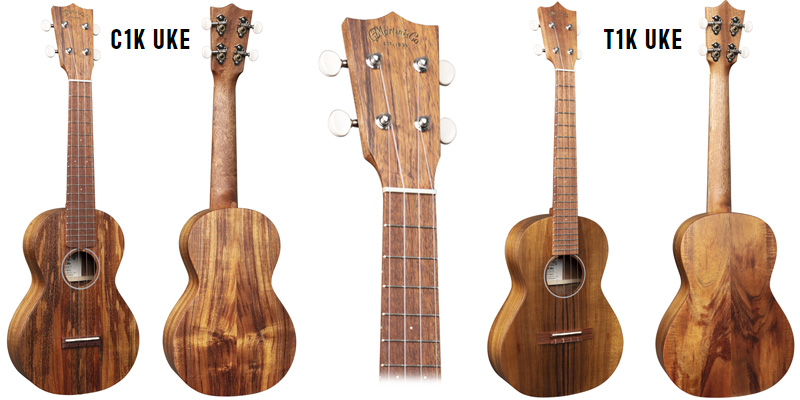
Build Quality & Appearance of C1K and T1K
The C1K and T1K are fantastically constructed ukuleles. Craftsmanship is tight and clear, and attention to detail is great–these ukes have a total feeling of high quality that actually comes through when you’ve got a chance to see and play one.
The 1K series are inbuilt in Martin’s Mexican factory, which is where they produce a few of their more affordable guitars. I’ve performed quite a couple of made-in-Mexico Martin instruments and really feel that the craftsmanship of those instruments is almost similar to their US-made instruments.
Another method Martin retains the price down on the 1K ukes is by minimizing cosmetics. The C1K and T1K have a satin finish, no binding, and a really primary fretboard inlay pattern and rosette.
By reducing back on pointless appointments, Martin is ready to provide these ukes at a substantially cheaper price. As much as I can admire fancy features like ornate binding and elaborate inlays, I’m a giant fan of the 1K series’ simple, understated design.
Martin Guitar C1K Acoustic Ukulele with Gig Bag features
Martin T1 StreetMaster Tenor Ukulele features
Solid Koa Construction
A big selling point for the C1K and T1K is their solid koa bodies and build quality. Koa is a wonderful wood that only grows in Hawaii, and it has been used as a standard ukulele tonewood for many years.
Why does solid koa wooden construction matter? As a basic rule, solid wooden produce a warmer, richer tone than the laminated wood normally found in cheaper instruments.
The koa wood used on their 1K ukes isn’t quite as figured as what you would possibly find on higher-end instruments, but it surely still seems to be and sounds good and warm.
Accessories
The C1K and T1K include open-back Grover tuners. These are good, high-quality tuners that present easy and correct tuning. Whether or not you’ve got a collectible vintage ukulele or a brand new, factory-made ukulele, it’s essential to get your strings in tune to sound nice quickly and reliably with these tuners.
The included gig bag is decent quality, but it surely’s not super hard and won’t protect the uke from crushing damage or a tough impact. We wish Martin included a hard case with these ukes instead gig bag, however, that most likely would have pushed the price up another $75 to $100 so I can understand why they went with the gig bag.
Considering the price of these ukuleles, we’d extremely suggest investing in an aftermarket hard case, included gig bag isn’t enough for the protection of the instrument.
The tone of C1K and T1K
As we touched on above, the all-solid koa construction material helps to give the C1K and T1K a big, warm, open tone while playing. Each time you play one of the 1K ukes in a store you can hear a resonance and complexity that simply isn’t there with cheaper ukes.
The C1K and T1K even have incredible volume and projection, making these affordable ukuleles perfect for vocal accompaniment or playing in small groups. The C1K and T1K are wonderful examples of why this brand remains to be the name in superior quality ukuleles.
My only complaint is in regards to the factory-equipped Martin strings. The Martins-brand fluorocarbon strings aren’t terrible, however, I’ve swapped Martin strings out for Aquilas previously and felt it did so much to improve the tone.
T1K All Solid Hawaiian Koa Tenor Ukulele
- Solid wood Hawaiian koa back, sides, and top for authentic, musically rich island tone
- Sitka spruce bracing lends internal strength while allowing organic flex and resonance
- Sipo fingerboard and bridge add traditional image and function
- Nickel open-gear tuning machines look great and function smoothly for tuning stability
- Hand-rubbed satin attractively displays the koa’s grain
- Solid Hawaiian koa ukulele
- Slightly-larger concert-sized built with Martin quality
- Koa top, back, and sides
- Hardwood neck topped with Sipo fingerboard
While the C1K and T1K are arguably the best values within the Martin ukulele lineup, they do have a handful of different models which are worth a look.
Martin Offer New Ukuleles
Martin Guitar delivered many new products for 2021 introduced recently at NAMM’s online event We Believe In Music. Building on the ever-growing reputation of this instrument, Martin has launched several new instruments, interesting to both newcomers and serious players with a variety of price factors.

OXK Concert Uke
A part of Martin’s X Series, this beautiful-sounding ukulele has a top, back, and sides constructed from durable high-pressure laminate (HPL). Martin hand-selected the best Hawaiian koa to provide this instrument the rich grain pattern of a way more costly ukulele.
However, as a result of its production from HPL, you may take this OXK model anywhere the beach, the stage, a road trip, and your only fear will probably be what chords to play next. It could be their lowest-priced uke, however, you’d never know it from the way it seems and sounds.
Concert UKE FSC
Constructed for serious players who need premium tone in environmentally-pleasant instruments, this concert-sized ukulele features top, back, and sides produced from 100% FSC certified mahogany. You’ll be able to feel good knowing that each one of the wooden on this ukulele is responsibly sourced, and also you’ll look and sound even better.
It’s constructed with an applied dovetail mahogany neck for additional stability, it sports Ratio tuners a brand new characteristic on Martin’s ukes to get you in tune quickly and precisely, and its satin finish provides the proper amount of shine. Set the best tone for the planet with this FSC ukulele model.
T1 Uke Streetmaster
This brand has been making tenor-sized ukuleles since 1929, however nothing quite like this. An ultra-thin finish creates a fantastically weathered look that feels as if it’s an old friend you’ve been playing with for years. The top, back, and sides are all mahogany, making it lightweight with a bright tone.
In case you play guitar and wish to study the uke, this size makes for a comfortable transition, and it’s nice for each toddler and a full-grown adult. The T1K StreetMaster brings together premier nice sound, excellent playability, and easy affordability in a single beautiful instrument.
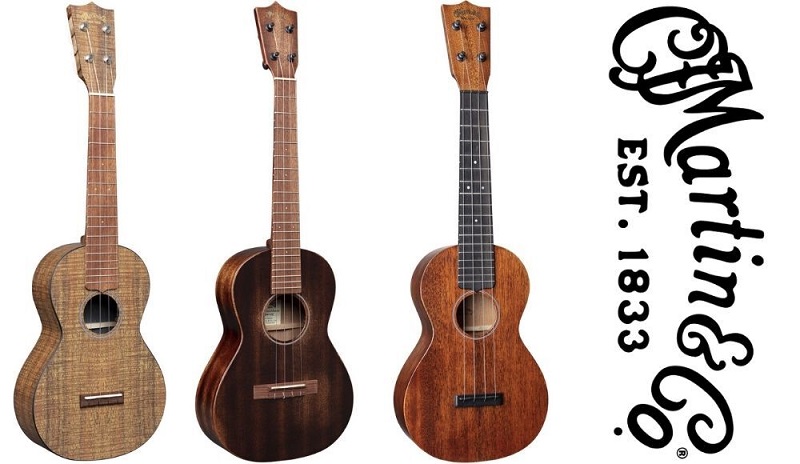
Conclusion
Martin has been Inspiring Musicians Worldwide for almost two centuries with their superior guitar, ukulele, and string products. Martin stays the selection for musicians all over the world for their unrivaled high quality, craftsmanship, and tone. Throughout the company’s lengthy historical past, Martin’s products may be seen and heard across all genres of music and in all segments of pop culture, from concerts and theater stages to tv and films.
With an unwavering dedication to environmental sustainability and responsible manufacturing practices, Martin regularly drives the acoustic guitar market forward, introducing revolutionary features that have to grow to be standards across the industry. These groundbreaking improvements include the introduction of X-bracing, the 14-fret guitar, and the “Dreadnought” size guitar.
This brand has additionally led to improvements in strings, similar to introducing the first high-tensile strength steel-string core wire; the first nickel acoustic strings; the proprietary Titanium Core strings; and now the groundbreaking, new Authentic Acoustic line, which gives unmatched stability, tone, comfort, and longevity.
However, the brand legacy lies with ukes players all over the world who agree that, throughout its historical past, the company has produced a few of the best ukuleles in existence.

